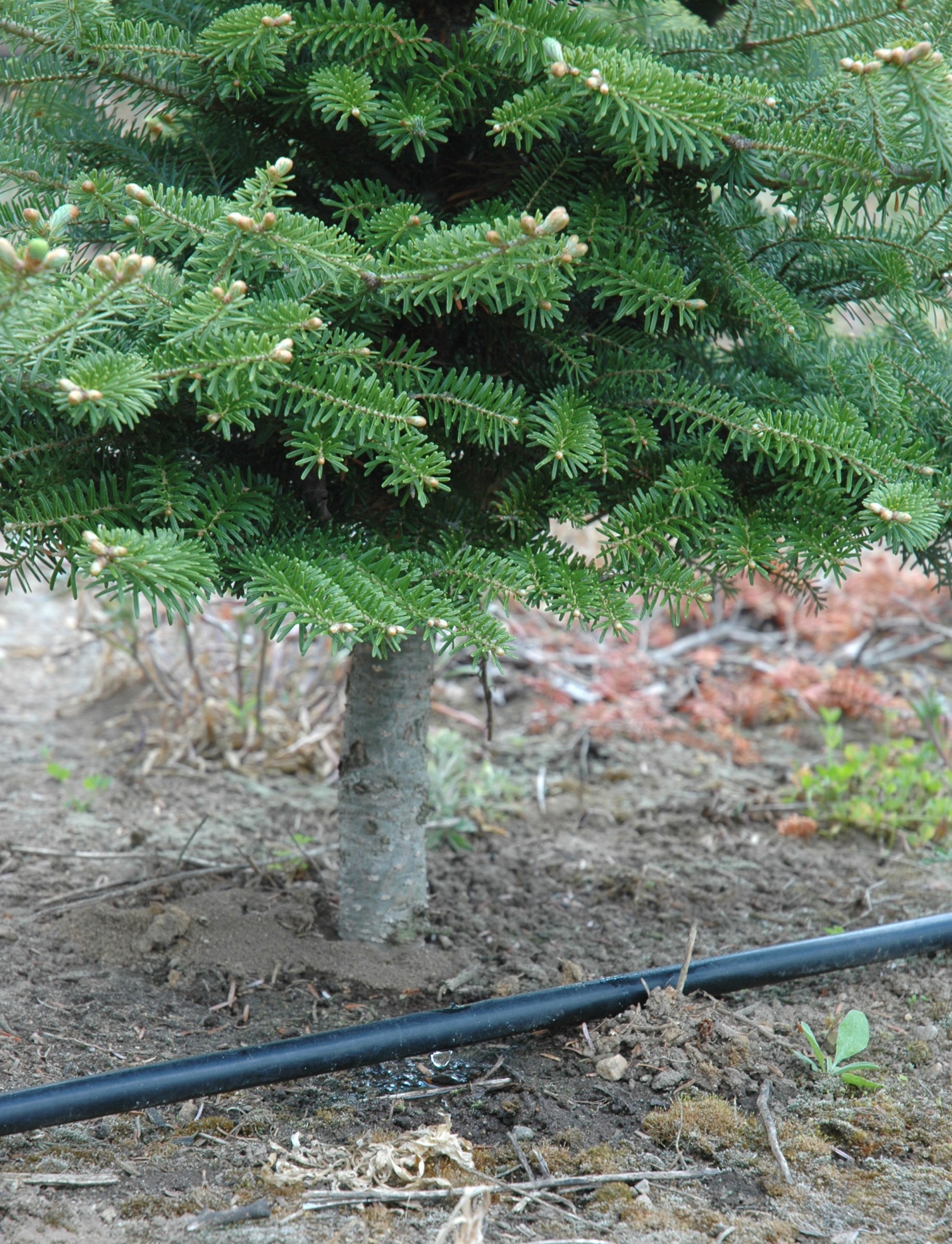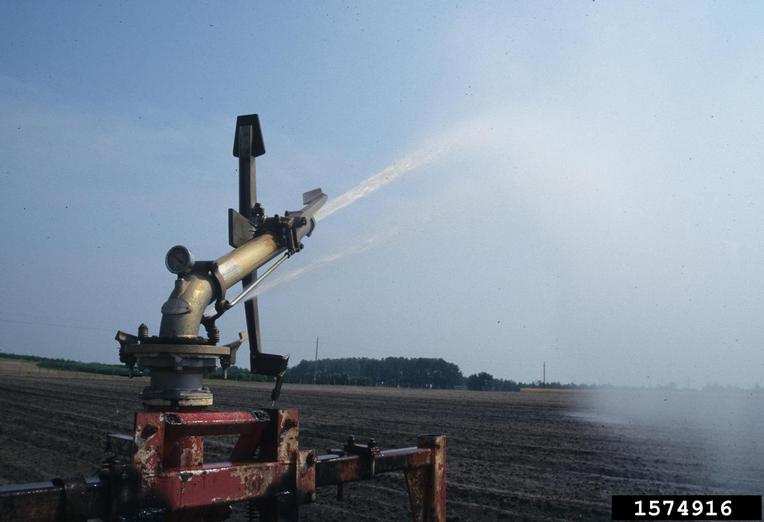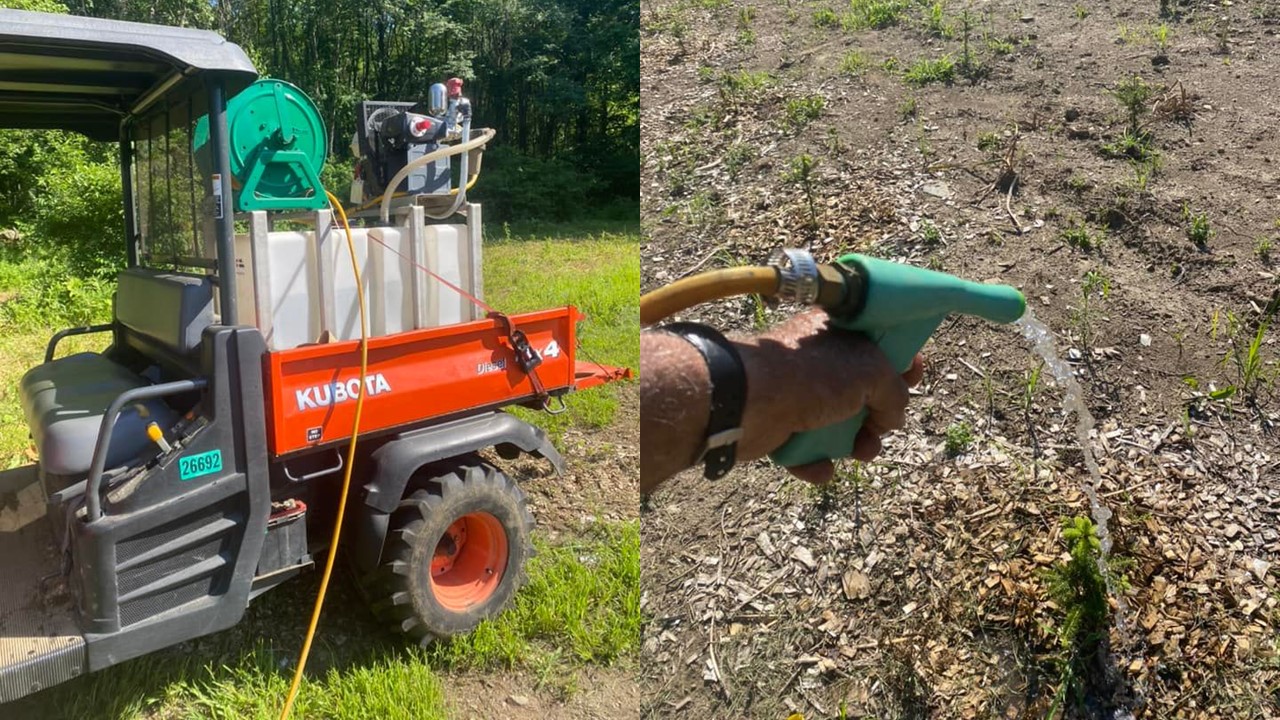Christmas trees 101: Irrigation management
Irrigating can save new transplants and improve the growth rate of mature trees.

Michigan is seeing a surge of new interest in Christmas tree production after decades of declining acreage. However, extreme weather events are becoming more common. This can make growing trees more difficult for new and experienced growers alike. One specific weather challenge that growers face is increasing drought. Prolonged hot, dry conditions can be especially damaging to new transplants that do not have a well-established root system. Poor growth, high mortality rates and outright planting failures can be common in these situations (Photo 1). Older, more established Christmas trees can also exhibit reduced growth and quality during droughts, thereby increasing the length of time from planting to harvest.
While many growers in Michigan can produce quality trees without irrigation, adding an irrigation system to your farm can serve as an insurance policy to help reduce tree losses early in the crop rotation and improve overall crop growth and uniformity. There are several different systems irrigation systems to consider, each with their unique advantages and disadvantages.
Drip irrigation
Drip irrigation involves the use of small diameter plastic lines (e.g., 18 millimeters) that have water emitters spaced at consistent increments (e.g., 24 inches) or that can be added at desired intervals. Each emitter can deliver a consistent amount of water per acre (e.g., one-half gallon per hour). These lines run parallel with Christmas trees in row (Photo 2). The specific emitter output, drip line size and emitter spacing will be dependent on the length of rows and size of water source.

A large benefit of a drip irrigation system is that it is the highly water efficient. No water is lost to evaporation prior to being absorbed into the soil. Drip irrigation systems can also function on smaller water capacity sources, which can be important in situations with a limited water supply. A drawback to drip irrigation include regular maintenance of the drip lines. Lines may be damaged due to common grower practices, such as shearing, mowing, or harvesting and can also be damaged by wildlife. Finally, moving drip lines between tree rotations can be time consuming.
Overhead irrigation
Water can be applied through overhead irrigations systems, such as solid set irrigation pipes, traveler guns or center pivots (Photo 3). Advantages of these systems are that growers can apply a relatively high amount of water in a short duration event. Troubleshooting is easier with overhead systems because malfunctions are readily observed, whereas issue with drip systems may not be apparent until trees begin to show water stress. Drawbacks include needing a higher capacity water source and possible increases in disease pressure due to extended wetting periods of the tree canopy. Finally, these systems are much less efficient than drip irrigation. Water may be lost to evaporation prior to being absorbed into the soil or water may end up outside of the root zone.

Hand-held irrigation
Growers can get creative and engineer their own irrigation equipment. Generally, these systems include a water holding structure (e.g., cage tote) and are placed on a truck or trailer moved into the field (Photo 4). Growers can then apply water directly to individual trees. Advantages to these systems are low initial costs. However, a disadvantage is the very high labor costs to operate. Considering that an acre inch of water is 27,154 gallons of water, even applying a fraction of that amount of water will require lot of trips to refill the water holding container.

When should I irrigate?
There are several different approaches to answer this question. Michigan State University Extension recommends using a combination of these methods to determine your farm needs. A qualitive way to determine irrigation needs is to physically feel the soil and determine the moisture level. Another way to determine soil moisture is with a soil tensiometer (Photo 5). These devices essentially work by measuring amount of force that would be required for plants to pull water from the soil. The drier the soil is, the more pull and the higher the reading.

MSU Extension recommends keeping records of tensiometer measurements for reference points and to understand how your irrigation scheduling is influencing soil moisture. Another good reference for using soil tensiometers is MSU Extension bulletin E2977, “Using Tensiometers for Scheduling Irrigation of Fraser Fir in Christmas Tree Production. There are several other soil moisture monitoring systems that track soil moisture that can also be used.
Finally, MSU Enviroweather also provides an evapotranspiration daily summary report. This provides a reference as to how much water we would anticipate trees are using from the soil as part of the photosynthetic process. Under summer conditions, we can assume trees will use approximately two-tenths of an inch of water per day form the soil.
Which trees should I irrigate?
Newly planted seedlings and transplants are more susceptible to drought than established trees and should be the highest priority if growers are hand-watering or using portable irrigation systems such as a traveler or solid-set. During the first two years after planting, trees are establishing their root systems and re-initiating root-soil contact, making them vulnerable to drought. In contrast, trees that are 4-plus years old have relatively deep roots system and can better tolerate extended dry periods. Although drought may reduce growth of well-established trees, direct mortality of established trees due to drought is relatively rare except in severe droughts such as 2012.
How much should I irrigate?
To determine how much to irrigate, it is It is important to understand how much water your soil can hold and be accessed by the crop (water holding capacity). Once half of the soils water holding capacity has been used, it is recommended to irrigate to recharge the soil. Irrigating past this point can cause problems (soil erosion, fertilizer, and herbicide leaching, increasing root rot diseases) without any additional benefit. Heavier (loam/clay) soil types can hold more water than lighter, sandy soils (Table 1).
Another important concept to consider is the depth the tree root system is within the soil profile. For new transplants, this could be around 6 inches, while established trees within the top 18 to 24 inches of soil. On a loam sandy soil, the water holding capacity would be approximately 1.2 inches per foot. New seedlings would have access to the top 6 inches of soil, thereby having a soil water capacity of 0.6 inches. In this scenario and based on MSU Enviroweather evapotranspiration daily summary reports, we would expect to irrigate about a quarter inch of water every other day to prevent drought stress.
|
Table 1. Available water capacity by soil texture. Adapted from “Soil and Water Relationships” by Jeff Ball. |
|
|
Texture class |
Available water capacity (inches/feet of depth) |
|
Coarse sand |
0.25-0.75 |
|
Loamy sand |
1.10-1.20 |
|
Sandy loam |
1.25-1.40 |
|
Silt loam |
2.0-2.5 |
|
Clay |
1.2-1.5 |



 Print
Print Email
Email
